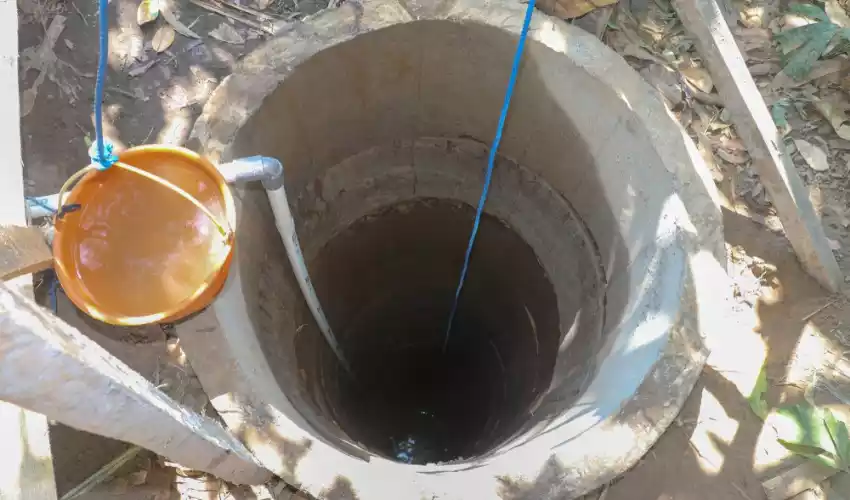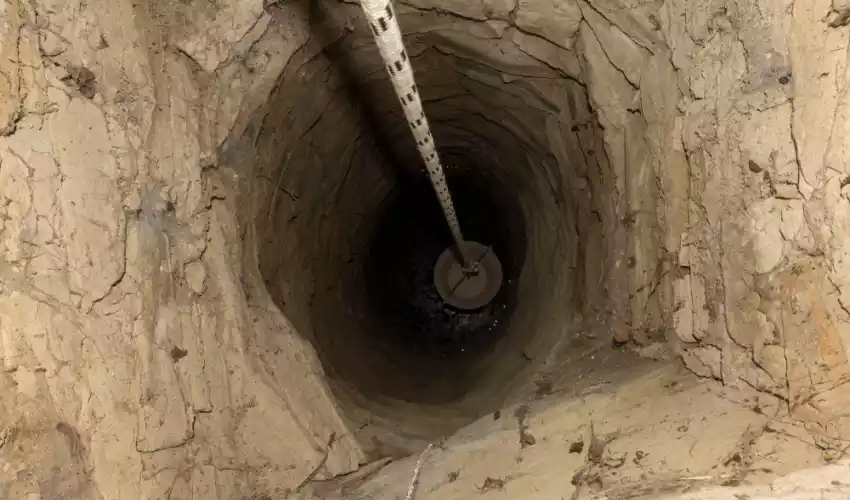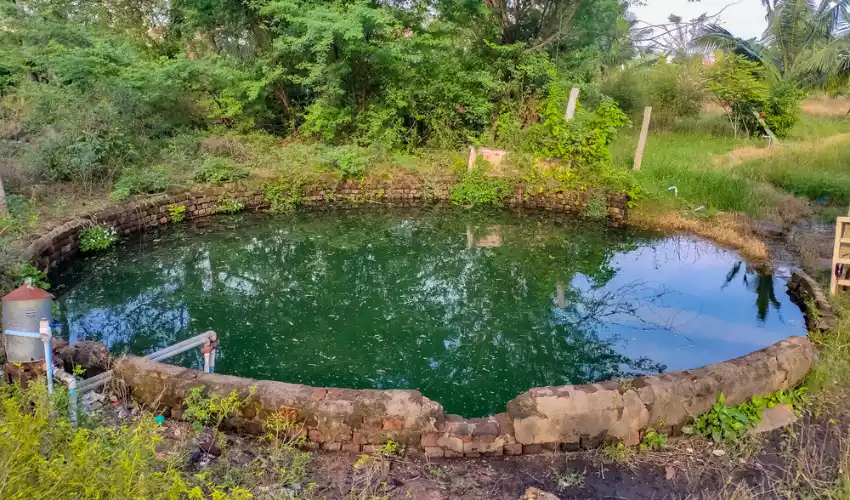Water is the lifeblood of our homes and lives. With increasing reliance on private wells for water supply, understanding the static water level in your well has become a vital aspect of home maintenance. The static water level gives us crucial insights into the well’s health and longevity.
The static water level is the natural water level in a well when it’s not being pumped and is at equilibrium with the surrounding water table. Regularly measuring this level can help monitor well health, identify potential issues, and ensure a steady supply of water.
Water level measurement isn’t a herculean task. With a few necessary tools and understanding, even a novice homeowner can measure the static water level. This knowledge becomes a key tool in maintaining your well and ensuring its longevity.
What is Static Water Level?
Static water level is the term used to describe the water level in a well under normal, undisturbed conditions. It’s a critical factor in assessing the health of your well. An unexpected change in the static water level may indicate issues like declining groundwater levels, well yield problems, or mechanical issues with the well itself.
Tools Required for Measuring
When it comes to measuring the static water level in your well, you’ll need a few basic tools:
- Depth-to-water measuring device: These tools, also known as sounders or meters, can help you determine the water level in your well. Some advanced models even offer temperature and conductivity measurements.
- Safety equipment: Never forget the importance of safety. Use a sturdy ladder if necessary, wear gloves, and ensure your equipment is in good working order.

Steps to Measure Static Water Level
The process of measuring the static water level in your well is quite straightforward. It’s an essential part of maintaining the health of your well. Here are the detailed steps:
Preparation Stage
Before starting the measurement, you should allow the well to ‘rest.’ This ‘resting period’ means that no water is drawn from the well for several hours. This period allows the water level in the well to stabilize, providing a more accurate representation of the static water level.
Position Your Tool
Once the well is at rest, you can lower your depth-to-water measuring device into the well. It’s important to ensure that the device doesn’t come into contact with the sides of the well, as this can potentially cause damage or inaccurate readings. Slowly lower the device until it touches the water surface.
Recording Measurements
When the device comes into contact with the water, it typically produces a sound or visual signal. This signal indicates the depth of the water within the well. You should record this depth as your static water level.
Repeating Process for Accuracy
It’s advisable to repeat the measurement process several times to ensure the accuracy of the results. Multiple readings can provide a more reliable and consistent measurement of the static water level.
Electronic and Manual Measurement
While technology has provided us with efficient and easy-to-use electronic devices for measuring static water level, the traditional manual method remains a valid alternative.
Advantages of Electronic Devices
Electronic devices for measuring static water level, such as water level sounders or meters, offer convenience and precision. These devices often come equipped with a probe, which completes an electrical circuit upon contacting water. This action prompts an audible or visual signal, which signifies that the device has reached the water level. Some advanced models can even provide additional information like temperature and conductivity measurements.
Steps for Manual Measurement
For those who prefer a hands-on approach, manual measurement is an option. This method involves lowering a marked cable or tape into the well until it becomes wet. The cable or tape is then removed from the well, and the wet portion is measured. While this method might not offer the same level of precision as electronic devices, it can still provide valuable insights into your static water level.

Reading and Interpreting Measurements
Reading and interpreting your static water level measurements is crucial for maintaining your well and identifying potential issues. Here’s how you can interpret these measurements:
Key Indicators in Measurements
The key thing to look for in your measurements is any significant change in the static water level over time. For instance, a consistent decrease in the static water level might indicate a depleting water source or possible issues with your well. On the other hand, a stable or increasing water level suggests that your well is healthy.
Impact on Well Capacity
Changes in your static water level can also affect your well’s capacity. A lower water level means less water is available for pumping. If the water level falls below the pump intake, it could cause the pump to draw in air instead of water, leading to potential damage.
Tips to Get Accurate Readings
Getting accurate readings of your static water level is essential for the effective management of your well. Here are some tips to ensure accuracy in your readings:
Best Practices for Measurement
Always take your measurements at the same time each day, ideally in the morning before any water has been drawn from the well. This consistency helps to minimize the impact of variables like daily water usage on your readings.
Pitfalls to Avoid
It’s also important to avoid common pitfalls that could affect the accuracy of your readings. For example, always ensure that your measuring device is clean before use, as dirt or debris could interfere with its functioning. Also, avoid rushing the measurement process, as haste could lead to errors in recording the water level.

Maintaining Well Water Levels
Keeping your well water at an optimal level is not just about taking measurements. It also involves implementing practices that help maintain your well and ensure a steady supply of water. Here’s how you can maintain your well water levels:
Importance of Regular Monitoring
Regular monitoring of your static water level is the first step in maintaining your well. This practice helps you spot potential issues early and take necessary action before they escalate. Regular monitoring also helps you understand your well better, giving you insights into how it responds to different seasons and usage patterns.
Sustainable Water Usage Tips
Adopting sustainable water usage practices can help maintain your well water levels. These practices include using water-efficient appliances, fixing leaks promptly, and avoiding excessive water use. Implementing these measures can help reduce the strain on your well and contribute to the overall sustainability of your water resource.
Impact of Seasonal Changes
Your well water levels aren’t static; they can fluctuate due to various factors, including seasonal changes. Understanding these changes can help you better manage your well.
Fluctuation in Water Level
During wet seasons, the water table generally rises due to increased rainfall, which in turn can cause an increase in your static water level. Conversely, during drier periods, the water table may fall, resulting in a decrease in your well water level.
Necessary Adjustments
Knowing how your well water level responds to seasonal changes can help you make necessary adjustments to your water usage. For example, you might need to reduce your water use during dry periods to prevent your well from running dry. On the other hand, during wet periods, you might have a larger supply of water available.
When to Seek Professional Help?
Although regular self-monitoring of your static water level is essential, there are times when professional help might be needed.
Troublesome Signs
Certain signs, such as a drastic drop in your static water level, a change in the taste or appearance of your well water, or the presence of air bubbles in the water, may indicate serious issues with your well. In such cases, it’s advisable to seek the assistance of a professional.
The Role of Professionals
Certified well contractors have the expertise and tools to diagnose and resolve well issues. They can perform a comprehensive inspection of your well, identify the root cause of any problems, and suggest the best course of action. While professional services might come at a cost, they can help protect your investment in your well and ensure a steady supply of safe and clean water for your household.
Frequently Asked Questions
How often should I measure my static water level?
It’s recommended to measure your static water level at least once a month. However, during periods of heavy usage or seasonal changes, more frequent measurements may be helpful.
Can I use any tape or cable for manual measurement?
Ideally, use a tape or cable that won’t absorb water or stretch over time. Steel tapes or cables marked at regular intervals are typically used for this purpose.
What if my static water level is continually falling?
A consistently falling static water level could indicate overuse or well issues. In this case, it’s advisable to consult with a professional well contractor.
Conclusion
Knowing your well’s static water level isn’t just a handy piece of trivia. It’s essential information that every well owner should be equipped with. Regular measurements can serve as early warnings for potential issues, facilitating timely maintenance and helping ensure a constant supply of water.
Water is our most valuable resource. Therefore, it’s in our best interest to use it responsibly and sustainably. Managing your well and regularly measuring the static water level is a step towards better water management and sustainable living.
Professional assistance can be invaluable when dealing with well issues. But proactive steps, such as regular measurements and understanding your well, can go a long way towards minimizing the need for professional intervention and maximizing the life and efficiency of your well.